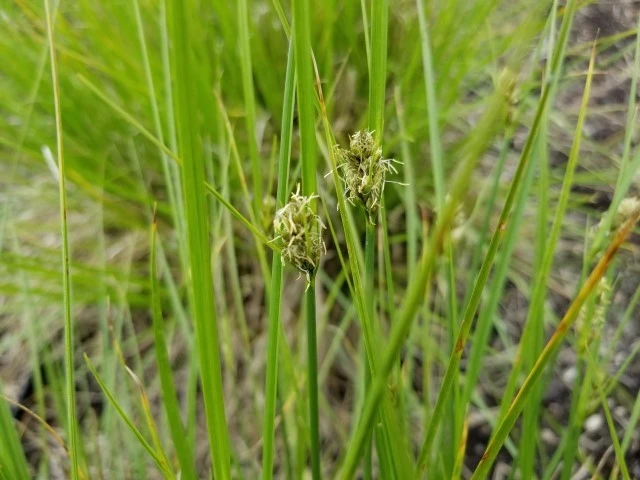Lateral Sedge
(Carex unilateralis)
Lateral Sedge (Carex unilateralis)
/
/

© Gail A Baker
CC BY 4.0
Image By:
© Gail A Baker
Recorded By:
Copyright:
CC BY 4.0
Copyright Notice:
Photo by: © Gail A Baker | License Type: CC BY 4.0 | License URL: http://creativecommons.org/licenses/by/4.0/ | Uploader: ribes2018 | Publisher: iNaturalist |






Estimated Native Range
Climate Requirements
| • Precipitation | 44" - 65" |
| • High Temp. | 72°F - 83°F |
| • Low Temp. | 30°F - 35°F |
Summary
Carex unilateralis, commonly known as the Lateral Sedge, is a perennial herbaceous plant native to wet meadows, marshes, and the edges of ponds and streams in North America. It is a sedge that typically grows in clumps and reaches heights of 10-60 cm. The plant is characterized by its grass-like leaves and the distinctive one-sided arrangement of its spikelets, which gives rise to its common name. The flowers are not showy, being more functional than ornamental, and appear in late spring to early summer. The fruit is a small, brown, urn-shaped nutlet that is of interest to some wildlife species.
Lateral Sedge is valued for its ability to thrive in wet conditions and is often used in rain gardens, bioswales, and as a component in wetland restoration projects. It is also suitable for naturalistic plantings in water gardens. This sedge prefers full sun to part shade and requires consistently moist to wet soil conditions. It is relatively low maintenance but may require division every few years to maintain vigor. While generally free from serious pests and diseases, it can be susceptible to leaf spot. Carex unilateralis is not known for being invasive and does not typically present problems when grown within its native range.CC BY-SA 4.0
Lateral Sedge is valued for its ability to thrive in wet conditions and is often used in rain gardens, bioswales, and as a component in wetland restoration projects. It is also suitable for naturalistic plantings in water gardens. This sedge prefers full sun to part shade and requires consistently moist to wet soil conditions. It is relatively low maintenance but may require division every few years to maintain vigor. While generally free from serious pests and diseases, it can be susceptible to leaf spot. Carex unilateralis is not known for being invasive and does not typically present problems when grown within its native range.CC BY-SA 4.0
Plant Description
- Plant Type: Grass
- Height: 0.5-1.5 feet
- Width: 1-2 feet
- Growth Rate: Moderate
- Flower Color: N/A
- Flowering Season: Spring, Summer
- Leaf Retention: Evergreen
Growth Requirements
- Sun: Full Sun, Part Shade
- Water: Medium, High
- Drainage: Medium, Slow
Common Uses
Erosion Control, Low Maintenance, Water Garden
Natural Habitat
Wet meadows, marshes, and the edges of ponds and streams in North America
Other Names
Common Names: One-sided Sedge, Coastal Plain Sedge
Scientific Names: Carex unilateralis, Carex athrostachya var. unilateralis
GBIF Accepted Name: Carex unilateralis